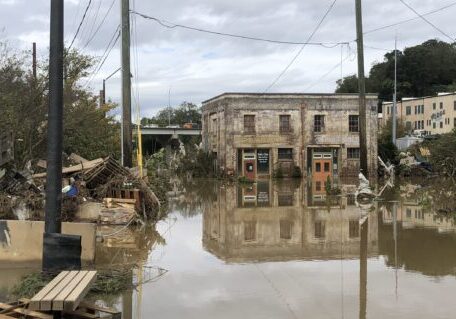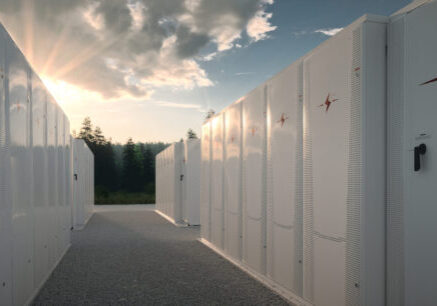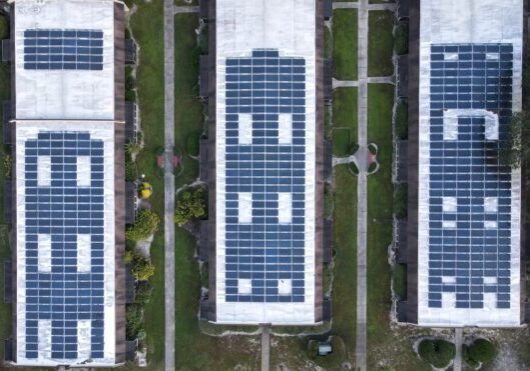January 30, 2019
Battery Storage Could Revolutionize Home Health Care: Lessons Learned from Puerto Rico
By Lewis Milford
Clean energy follows the rules of most new technologies. They disrupt existing, status quo technologies when they can out-compete on cost and performance: Is the new technology cheaper and does it work as well (for example, battery storage and renewables are beginning to upend fossil fuel power plant markets)? Or they can create a market that did not exist before (think of smartphones, a market that did not exist years ago; it took Steve Jobs to create it).
This is business school, disruptive technology 101.
The home health care industry is potentially a new market for battery storage that does not exist today. Over 2.5 million Medicare beneficiaries have been identified as electricity dependent due to their reliance on home health care equipment, like oxygen concentrators or ventilators.
Some of that equipment might have a short-term battery backup unit, while many other technologies have no backup system at all. In an extended power outage, the elderly and the physically infirm can suffer severe health impacts. That has been the status quo until now, and most vividly evident in Puerto Rico, where health complications, including outage-related issues like medical device failure and lack of refrigeration, were responsible for almost one-third of the estimated 4645 additional deaths in the three months following Hurricane Maria.
Dr. Lilo Pozzo and her colleagues at the University of Washington recently published a new study on electricity-dependent households in Puerto Rico following Hurricane Maria, “PV-Battery Systems for Critical Loads During Emergencies: A Case Study from Puerto Rico After Hurricane Maria.” Over a period of several months, Dr. Pozzo led a team on three field trips to Jayuya, a remote town in the mountainous center of Puerto Rico, to collect information on critical home medical needs requiring electricity and to install small solar and battery storage systems to support in-home health care devices and essential services, such as refrigeration of medications. (Dr. Pozzo also recorded an excellent seminar on her work in Puerto Rico, available here.)
The study details the following key findings:
- Long-term power outages can be lethal to individuals who rely on electrically powered medical devices, such as oxygen concentrators, feeding machines, electric bedding, or medicines that must be refrigerated.
- Diesel generators (the traditional go-to resource for backup power) for such patients can have significant negative health impacts. Patients with asthma and chronic obstructive pulmonary disease (COPD) “had worsened due to the exhaust gases.” Due to noise, generators could not be used at night for patients needing to power devices during sleep. Additionally, households in Jayuya reported that obtaining diesel fuel could be “unreliable if not impossible” and the cost of running a generator could be prohibitive for low-income patients. Frequent breakdown were also common occurrences and maintaining the systems could be challenging for the ill and elderly.
- All 15 households given solar and battery storage systems reported that they preferred them over diesel generators.
- While solar and battery storage systems required more expensive upfront investments than diesel generators, these systems become cost effective when households experience frequent or extensive outages. (The upfront cost of solar and battery storage has led to recent incentive proposals by the Puerto Rican government.)
The research is a perfect example of how a clean energy technology can develop into an entirely new market, not only in Puerto Rico but throughout the mainland US – one that can deliver better health outcomes than what we have in place today. (It is also a perfect example of how solar and battery storage might serve a primary public health purpose through resilient power applications at home, but also deliver secondary climate and emissions reductions benefits as these technology market expand.)
A big part of clean energy transition strategy is to find new markets for these technologies that can compete on price, performance, or other attributes – developing local markets that are not solely dependent on the vagaries of federal or state policies.
Dr. Pozzo’s research only applies to Puerto Rico, but it begins to sketch out some future strategies for mainland populations, such as the over 2.5 million people, many elderly and poor, who are dependent on home health care equipment. At present, these populations are at risk due to power outages.
For the most part, there is no systematic approach to reduce those risks to this large and growing population. Many are kept on a “do not disconnect” list by utilities, but that is about it.
However, there are some hopeful signs of new strategies being rolled out. Green Mountain Power, the largest utility in Vermont, launched a pilot program to install 2,000 Tesla Powerwall battery storage systems in customer homes. A hundred low-income customers that require electricity for health or mobility purposes will receive batteries at no charge. The program’s participants are already starting to experience the benefits. After a winter storm resulted in widespread outages, Tesla Powerwalls provided an average of 13 hours of backup power to 438 Green Mountain Power customers.
Such innovations need to expand greatly, so these technologies are available as a right to this at-risk population.
It is time to treat this health issue differently. This is a rare opportunity to combine strategies for clean energy and public health.
Rather than merely putting vulnerable households on utility lists for evacuation, it is time to integrate our clean energy and public health goals to protect the most vulnerable with better, cleaner, and more reliable technology solutions. Dedicated city and utility programs – and third-party providers – should start to offer solar and battery storage (or at least residential battery storage) to protect these communities from ever increasing risks of power outages and non-functioning electric-powered medical equipment.
There is no excuse for the extensive death and ill health effects experienced by the people of Puerto Rico. These harms can be prevented.
What we need are new strategies and investments to bring resilient power technologies where they are needed the most. It’s that simple, and leaders like Dr. Lilo Pozzo are showing us the way.
This blog post was also published in Renewable Energy World.














